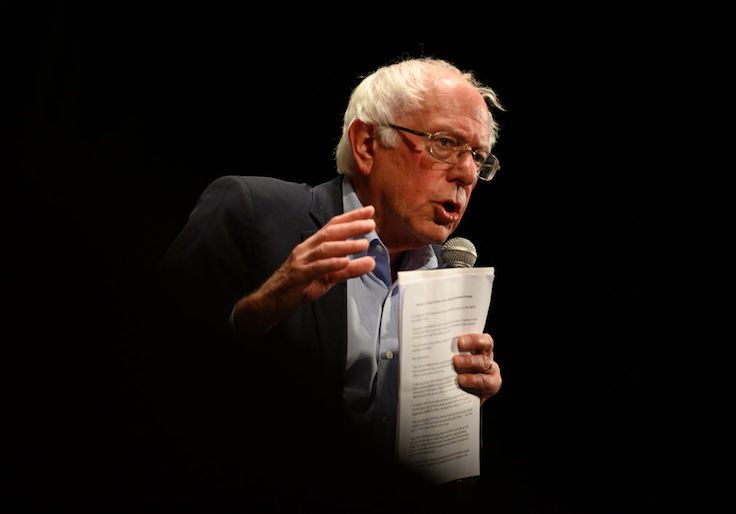Sen. Bernie Sanders (I., Vt.) debuted his version of the much-vaunted Green New Deal, a plan which would radically and fundamentally alter the American economy for decades to come.
The plan would require $16.3 trillion dollars in public spending to transition the United States to 100 percent renewable energy by 2030 and completely decarbonize by 2050, according to Sanders's campaign. Sanders contends, however, that the plan would "pay for itself" in 15 years, thanks to a bevy of new taxes and 20 million new jobs the plan means to create.
With his proposal, Sanders solidifies his lead as the biggest-spending candidate for president in the 2020 field. A July Free Beacon analysis found that Sanders had announced $36 trillion in spending proposals since the start of the campaign. His $16 trillion not only brings this total over the $50 trillion mark, but sails past the climate proposals of other candidates—topping Sen. Kirsten Gillibrand’s (N.Y.) ambitious $10 trillion plan.
Franklin Delano Roosevelt's New Deal cost about $780 billion, adjusted for inflation, according to an estimate from the St. Louis Federal Reserve Bank. That means Sanders's proposal would be more than 20 times more expensive than its predecessor.
What will all that spending ostensibly pay for? First and foremost is the transition to renewable energy, including what amounts to a nationalization of the energy industry in the United States through the construction of new power generation capacity under the Department of Energy and federal Power Marketing Administrations.
A Sanders administration would also spend trillions of dollars weatherizing and electrifying homes and businesses, as well as transforming transportation infrastructure by switching industry and personal vehicles to electric. That would hardly be the limit of major spending programs, however: The Sanders plan also promises publicly owned internet, regional high-speed rail, and $500 million to help farmers transition to "organic farming."
While the plan's primary goal is a transition to "clean energy," it would also mean a radical transformation of much of the economy. Sanders's proposal pledges to "follow Environmental Justice principles," and promises that "the Green New Deal will redress historical injustices, by tackling poverty, inequality, and the disproportionate impacts of environmental damage on poor neighborhoods, communities of color, First Nations, and rural America." It also offers health benefits to workers displaced by the Green New Deal: "five years of a wage guarantee, housing assistance, job training, health care, pension support, and priority job placement for any displaced worker, as well as early retirement support for those who choose it or can no longer work."
Conspicuously absent from the Sanders proposal are many technologies that experts agree are necessary to address climate change. The plan explicitly rules out "nuclear, geoengineering, carbon capture and sequestration, or trash incinerators," calling them "false solutions" and citing meltdowns like the Fukushima Daiichi accident to justify a moratorium on the construction of new nuclear plants.
Much of the plan would be paid for by an attack on the $4 trillion fossil fuel industry. Sanders promises to "massively" raise taxes on "corporate polluters' and investors' fossil fuel income and wealth," as well as bring lawsuits against energy firms alleging willful wrongdoing akin to the 1998 tobacco settlement.
Essentially shutting down American domestic energy production would only partially pay for the plan, according to HuffPost. Sanders claims that he will finance the plan with $1.215 trillion from "scaling back military spending on protecting global oil," $1.31 trillion from reduced welfare thanks to new jobs, $6.4 trillion from selling electricity, $2.3 trillion from income taxes on new jobs, and $2 trillion from "making the wealthy and large corporations pay their fair share."
